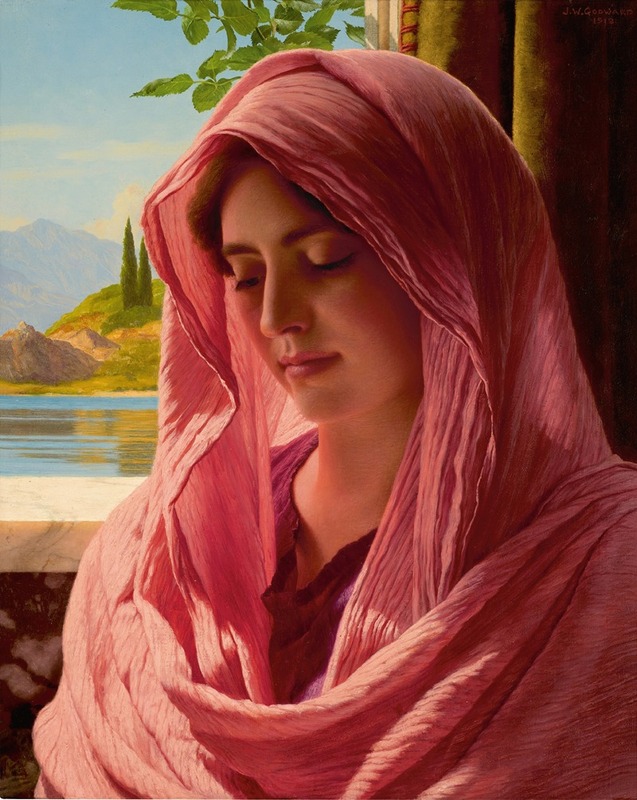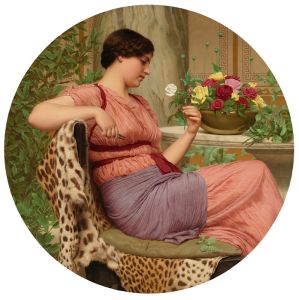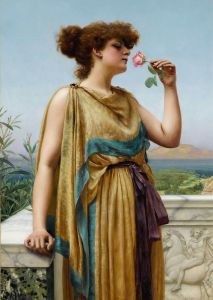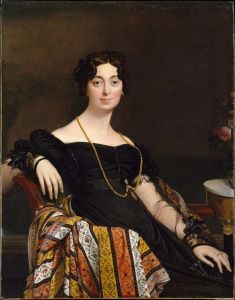
Pyrallis
A hand-painted replica of John William Godward’s masterpiece Pyrallis, meticulously crafted by professional artists to capture the true essence of the original. Each piece is created with museum-quality canvas and rare mineral pigments, carefully painted by experienced artists with delicate brushstrokes and rich, layered colors to perfectly recreate the texture of the original artwork. Unlike machine-printed reproductions, this hand-painted version brings the painting to life, infused with the artist’s emotions and skill in every stroke. Whether for personal collection or home decoration, it instantly elevates the artistic atmosphere of any space.
John William Godward was a prominent English painter associated with the Neoclassical movement. He was born on August 9, 1861, in Wimbledon, London, and became known for his meticulously detailed and idealized depictions of women in classical settings. Godward's work is often compared to that of Sir Lawrence Alma-Tadema, another artist known for his classical themes and attention to detail.
One of Godward's notable works is "Pyrallis," which exemplifies his signature style. The painting captures the essence of the classical world, a recurring theme in Godward's oeuvre. His works often feature women in serene poses, set against backgrounds that evoke the grandeur and elegance of ancient Rome or Greece. Godward's attention to detail, particularly in the rendering of textures such as marble and fabric, is a hallmark of his style.
"Pyrallis" showcases Godward's skill in portraying the human form with grace and precision. The subject of the painting is a young woman, depicted with the idealized beauty typical of Godward's figures. She is often shown in a contemplative pose, surrounded by elements that suggest a classical setting. The use of light and shadow in the painting highlights the delicate features of the subject and the intricate details of her attire.
Godward's choice of color palette in "Pyrallis" is characteristic of his work, with soft, muted tones that enhance the painting's tranquil and timeless quality. The background often includes elements such as columns or drapery, which further emphasize the classical theme. These elements are not merely decorative but serve to transport the viewer to a bygone era, creating a sense of nostalgia and romanticism.
Throughout his career, Godward remained committed to the Neoclassical style, even as other art movements, such as Impressionism and Modernism, gained popularity. His dedication to classical themes and techniques set him apart from many of his contemporaries. However, this also meant that his work fell out of favor as the art world moved towards more modern and abstract forms of expression.
Despite this, Godward's paintings, including "Pyrallis," have experienced a resurgence in appreciation. Collectors and art enthusiasts have come to value his technical skill and the serene beauty of his compositions. Today, his works are held in various private collections and museums, where they continue to be admired for their elegance and craftsmanship.
John William Godward's life was marked by a degree of personal tragedy. He was known to be a reclusive figure, and his adherence to classical ideals in art may have contributed to his sense of isolation as the art world evolved around him. Godward's life ended prematurely when he died by suicide on December 13, 1922. Despite the challenges he faced, his legacy endures through his paintings, which continue to captivate audiences with their timeless beauty.
In summary, "Pyrallis" is a testament to John William Godward's mastery of the Neoclassical style. The painting reflects his dedication to capturing the elegance and grace of the classical world, a pursuit that defined his career and left a lasting impact on the art world.


















